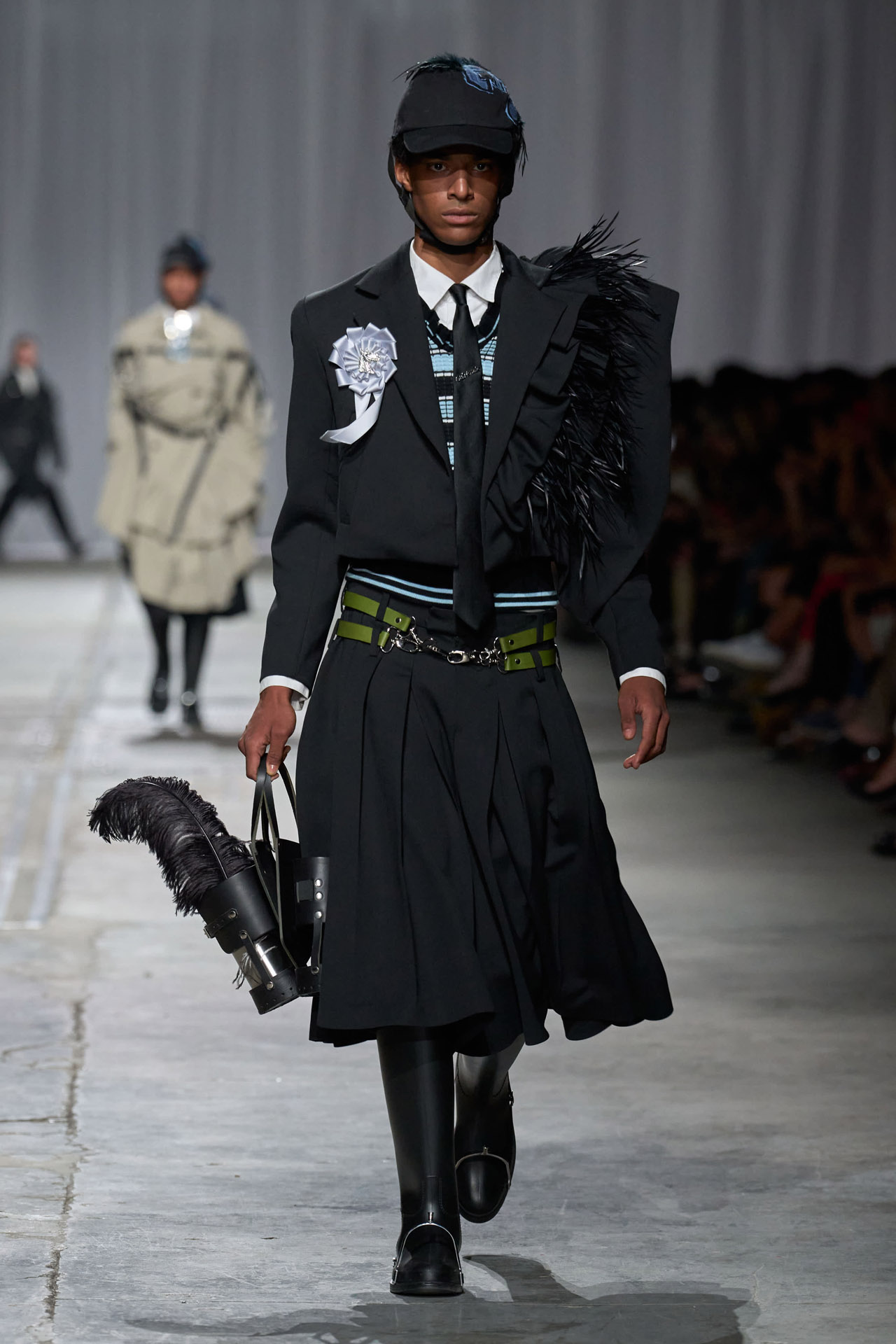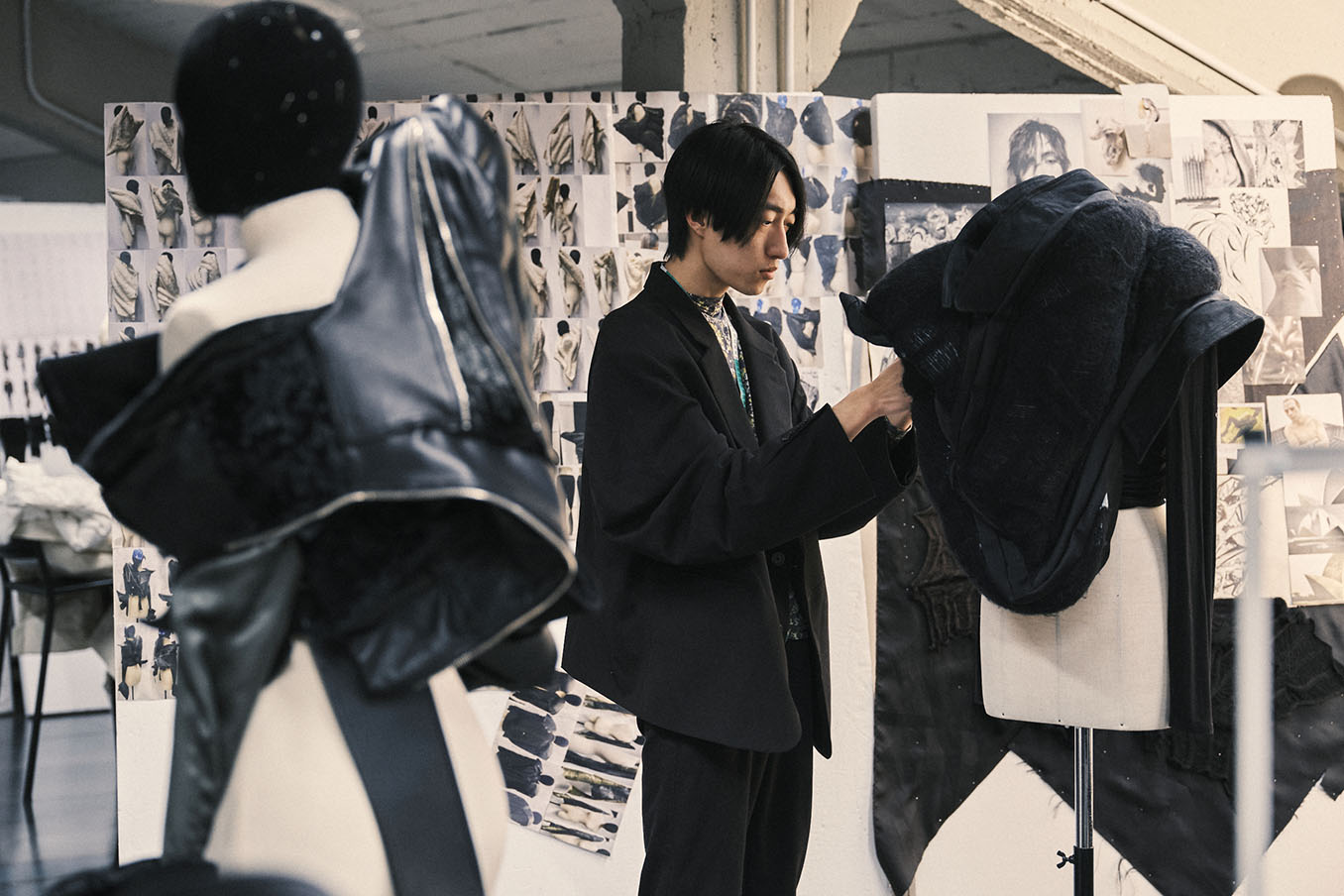Undergraduate in Fashion Art Direction graduate and Polimoda Journal correspondent Mobina Mirzaei reviews this year’s Graduate Show 2025.
There are moments when the world feels too sharp, too loud, and we slip into softer shapes just to catch our breath. In the era of perpetual headlines and screen-lit anxieties, escapism has become our secret. We tend to obsess about the past and the future, only to neglect our presence. In an age defined by uncertainty, pressure, and hyper-visibility, the younger generation turns to playfulness in fashion as both relief and rebellion.
From Nansen Capici’s Norwegian explorer in the Arctic, to Amina Vanneling’s six strangers under the rain in Gothenburg, to Isabella Valdez’s explorer who adventurously travels around the world seeking their home; one of the elements threaded through many of these works is a sense of nostalgia, but it is not the polished, packaged kind sold by luxury houses. “It’s about visiting the past, but not wanting to reside there,” said designer J.T. Prince, whose dreamy reworking of Americana felt hopeful. A sentiment that demonstrates an understanding that the past is not a destination, but a resource; a ghost that walks with us, not one we must become.
This is a generation of designers unafraid to blur the lines between effort and ease, languorous but deliberate, their designs evoke a third space, akin to the moment when you are wearing your pants but still holding the hanger. Something is slightly off while remaining oddly poetic, and entirely deliberate. Silhouettes are slouchy, at times deconstructed, but always intentional. There’s an invitation here to loosen the rules, to play with convention, and encourage you to be more daring. ”My collection is about this rebellious boy, from a small town, who wants to conquer Buenos Aires’ high society. Tired of his low-class lifestyle, he moves to the city and tries to social climb to the top of the high classes,” said designer Keila Mirmina.

These garments hang like slow-motion daydreams, shoulders sliding off as if shrugging at reality’s demands. The body is invited to relax its lines, to permit itself to dissolve into cloth, as though for once we believe in disappearing.
Together, these garments sketch the outline of a fashion world more attuned to emotion, to context, and to care. A world that has to listen as much as it speaks. A world where garments are not just worn but carry weight, memory, and meaning.
As these young creators move beyond Polimoda and into the wider world, they do so carrying more than portfolios. They carry questions, convictions, and dreams stitched with urgency. Fashion, for them, is no longer just commerce or craft. This generation isn’t merely designing clothes, they’re designing languages, designing futures. And if these final collections are any indication, the next chapter of fashion will be written with tenderness and boundless imagination.
CREDITS
Written by:
- Mobina Mirzaei, Undergraduate in Fashion Art Direction graduate
Cover image:
- Marco Gualtieri

